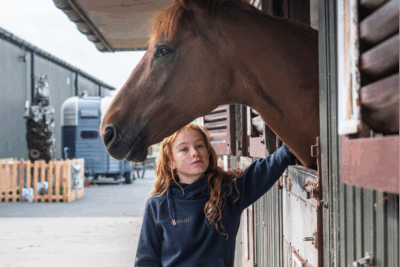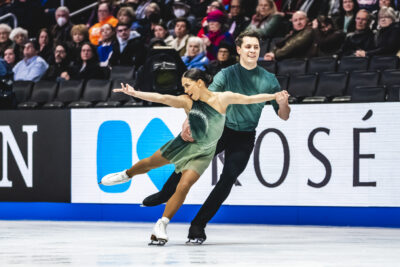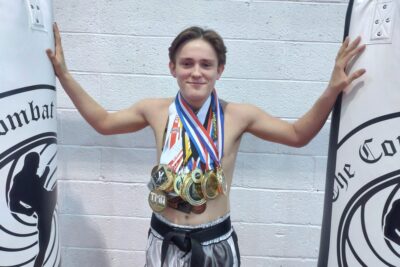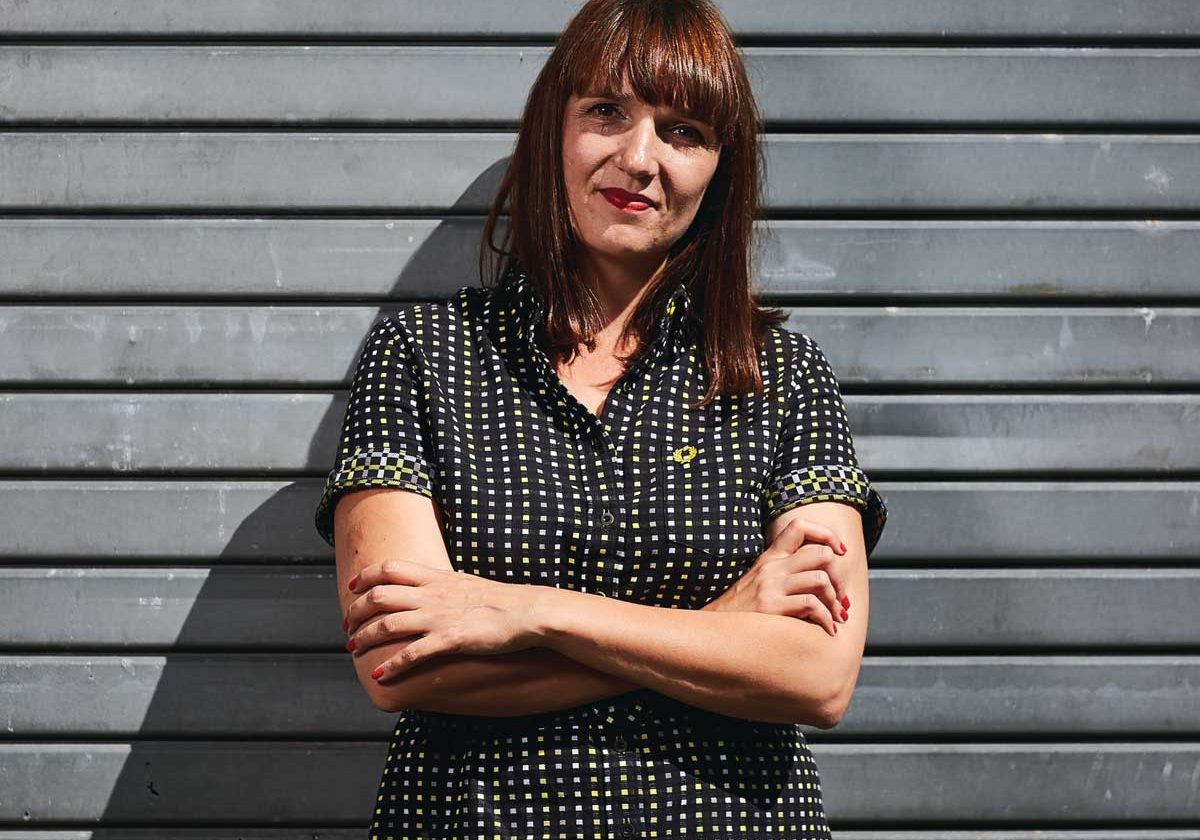
Adelle Stripe on her debut novel ‘Black Teeth and a Brilliant Smile’
by Northern Life
As part of her Phd in English and Creative Writing, Adelle Stripe conducted research at The University of Huddersfield in to the life of Bradford playwright, Andrea Dunbar. Using that research, Adelle has written her debut novel ‘Black Teeth and a Brilliant Smile’ – a kitchen sink noir that tells Dunbar’s life in print for the very first time featuring a cast of real and imagined characters set during the Thatcher era on the infamous Buttershaw estate. We caught up with Adelle, a renowned poet, to find out more.

Black Teeth and a Brilliant Smile by Adelle Stripe
What made you choose to research and write about Andrea Dunbar?
I watched a documentary about Andrea called In Praise of Bad Girls in 1989. I had a black and white TV with a dial, and used to plug my headphones in and watch all sorts of unsuitable programmes on Channel Four. That’s how I first watched Rita, Sue and Bob Too and discovered her plays. It wasn’t until I watched Clio Barnard’s The Arbor in 2010 that I began to think about Andrea again. It left me with many questions. I scoured the internet for everything I could find about her, and was convinced that somebody must have written a book about her life. It quickly became apparent that it hadn’t been written, I wanted to read one, so I decided to write it myself.
In my mind she was an important person in West Yorkshire’s history and I felt she had been neglected at the expense of other cultural figures from Bradford’s past.
What research did you have to do, where did you go?
I conducted my research in libraries including Bradford Local Studies – which has a wealth of material on her. I searched through microfiche reels at the British Library in London, and visited the Royal Court’s archive at Blythe House. I spoke to people who knew her – including her family and those that had worked with her. It took four years to pull the story together. My press cuttings file is enormous.
You’re from Tadcaster, did Andrea’s world seem quite familiar?
Tadcaster was a notorious town of drunks. It has three breweries and I grew up in a hard-drinking culture where 25 pints during the day isn’t out of the ordinary. I used to think
that it was normal for men to look pregnant, most of the Tad pissheads used to have beer-barrel bellies, bright red faces, and would drop down dead before they were 50. They all worked in the breweries and drank on the job. It’s not like that anymore, of course. But it was in the 1980s.
Andrea’s character of the ‘drunk dad’ is the sort of person I knew, and I related to it. That’s why I liked her writing. I wanted to be a playwright when I was a teenager and would write about those people. So in that sense I felt a connection to Andrea’s world.
Do you see any similarities between the characters in your book and those in Rita, Sue and Bob Too?
There are some. Her plays were a primary source as there is no existing literary work based on Andrea’s life. I had to build the chronology from scratch. She created drama from autobiographical details, so it only seemed right that I would do the same by creating fiction from fact.
Do you see any of yourself in the story?
There was so much research that I didn’t need to write myself into it. In some places there are minor details from my own life, but most comes from the imagination or research.
Why did you choose to write it as a novel and not a straight biography?
My initial intention was to write a straight biography, but as I gathered more research material it became clear that I was relying on her plays as the main source of primary evidence, and as they were dramatised versions of her own life, they couldn’t be trusted as factually correct.
Would you call it a particularly feminist piece of work?
Andrea’s story has traditionally been dominated by the male figures in her life. It was important for me as a writer to try and capture it from her perspective, as a young, female, working-class single mother, who survived a series of brutal relationships. It’s incredible that she found the time to write, considering the hardships she went through. I say that in both a physical and economic sense.
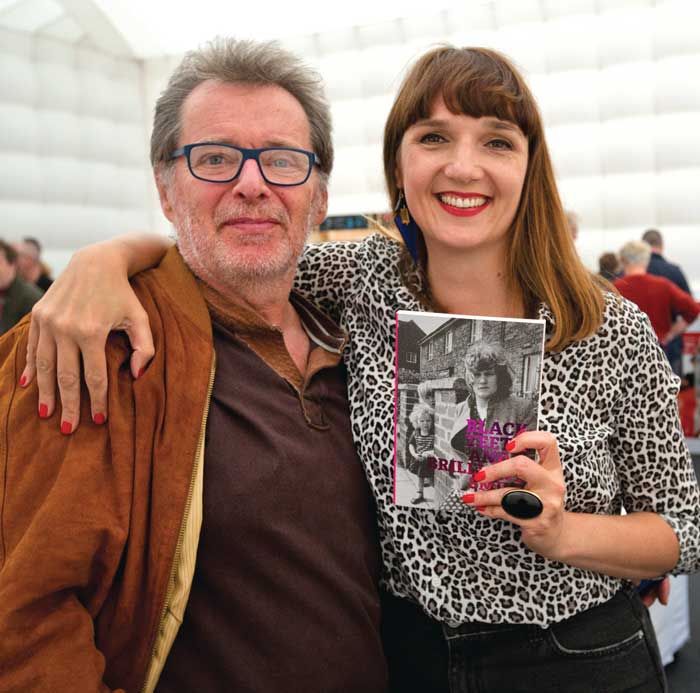
Adelle with George Costigan who played Bob in Rita, Sue and Bob too
Andrea didn’t define herself as a feminist at all but if it wasn’t for the networks of radical feminism she may not have ever been discovered in the first place. The women who worked at the Women’s Aid refuge in Keighley (where she stayed for a while after fleeing domestic violence) were connected to consciousness raising groups. Claire MacDonald and Jalna Hanmer passed on her script and that’s how The Arbor first arrived at the Royal Court. She was also employed at a theatre company in Bradford and worked with the Impact Theatre Group. This all happened as a direct result of feminism, they made a positive change in her life at that time.
Do you think much has changed in the North, since Rita, Sue and Bob too?
“The North is still experiencing unstable jobs, huge public sector debt, and a reduction in support for people who need it the most. It feels like parts of the North have been abandoned”
I visited Buttershaw on numerous occasions over the years, and walked the streets around Brafferton Arbor. It has changed quite a lot since Andrea’s day, in the 1990s it was part of Blair’s pathfinder scheme and had a multi-million pound investment. The flats have been demolished and replaced with newbuild homes. Andrea’s family home has a blue plaque on the wall which is a reminder of her significance to the area. I’d like to think that if it wasn’t for her writing the estate wouldn’t have had this regeneration. Something positive came out of the film and drew attention to the conditions people were experiencing.
In many ways we are still experiencing the same social problems, and issues around aspiration and class. The theatre world is still middle-class, and dominated by actors who have wealthy parents with sharp elbows. It’s getting harder for young working-class people to survive or even break into a creative industry. Right now, in 2017, the North is still experiencing an unstable job market, huge public sector debt, and a reduction in support for people who need it the most. It feels like parts of the North have been abandoned.
Do you think it’s still hard for working class writers to break through the barriers?
The Royal Court (under the stewardship of Max Stafford-Clark) nurtured writers such as Jim Cartwright and Caryl Churchill in the same period as Dunbar. Max did an excellent job with her first two plays, and played a key role in her development, despite the huge disparity in their upbringing and social class.
Even with the best intentions (such as increased funding and participation programmes) there will always be a barrier for working-class people, one that is invisible and rooted in the domination of arts and culture by the middle-classes. There’s the assumption that theatre, ballet, opera houses and art galleries are not spaces for the working-class. Northern working-class people already have their own culture, but the ‘high arts’ are out of reach.
Dunbar wrote her first play without ever having stepped foot in a theatre. She had a good teacher who encouraged her, and she wrote The Arbor for her CSE in Drama and achieved an A grade. She wrote about what she knew, what had happened in her everyday life, and the dialogue reflected the speech of her family and friends. The school library provided her with a copy of Murder in the Red Barn and a pile of Stephen King books.
These were the starting points for her. How to tell a story and lay it out. The role of libraries and her local school were intrinsic in building her confidence in the first place. It’s essential that working-class people have access to education and libraries. If you grow up in a house without books, then it’s a lifeline. We must protect them.
Has the research you’ve done given you a different insight into Andrea Dunbar’s life?
I have a completely different opinion of Andrea now, having spent the past four years thinking about her. When I first started researching the novel I was on the fence in terms of my views of her. As time went on I came out in favour of her, as that’s what the evidence and material suggested to me. In some ways she became my imaginary friend, although I was careful not to make this a hagiography.
You have written a lot of poetry, how has writing a novel differed?
It’s a completely different creative process. The kind of novel I’m interested in requires considerable amounts of research and a plot, characters and location. Poetry is a separate art. It’s all about economy of form and capturing an emotion, memory or scene. But the two are interlinked in many ways.


